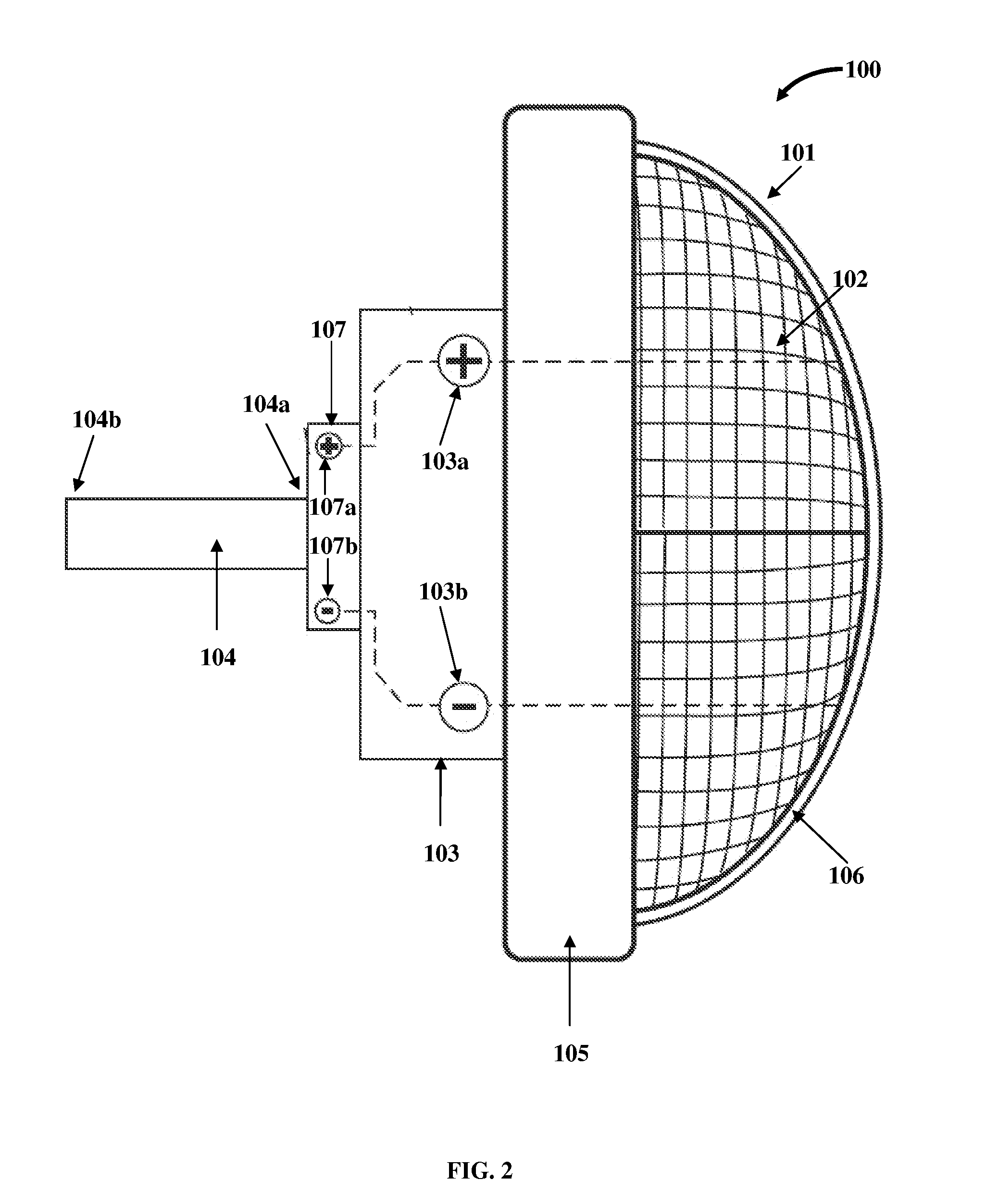Solar Powered Wheel Apparatus
a technology of solar energy and wheel, which is applied in the direction of pv power plants, rider propulsion, cycles, etc., can solve the problems of reducing the efficiency of solar energy conversion into electrical energy by solar devices, reducing the efficiency of rotating rotary objects, and reducing the electrical energy outpu
- Summary
- Abstract
- Description
- Claims
- Application Information
AI Technical Summary
Benefits of technology
Problems solved by technology
Method used
Image
Examples
Embodiment Construction
[0060]FIG. 1 exemplarily illustrates a side orthogonal view of a solar powered wheel apparatus 100, where a rotatable element 101 that houses photovoltaic cells 102 is connected to a rotary object 105, for example, a wheel. The solar powered wheel apparatus 100 disclosed herein comprises one or more photovoltaic cells 102, an electric motor 103, and an axial shaft 104. The photovoltaic cells 102 are housed on the rotatable element 101. As used herein, the term “rotatable element” refers to a panel 101 comprising a packaged interconnected assembly of photovoltaic cells 102. The rotatable element 101 is configured in one of multiple profiles, for example, a dome profile, a semi-spherical profile, a conical profile, a flat-ended profile, a trapezoidal profile, a pyramidal profile, and any combination thereof, to house multiple photovoltaic cells 102 in different arrangements as disclosed in the detailed description of FIGS. 8A-8D. The rotatable element 101 is connected to a rotary obje...
PUM
 Login to View More
Login to View More Abstract
Description
Claims
Application Information
 Login to View More
Login to View More - R&D
- Intellectual Property
- Life Sciences
- Materials
- Tech Scout
- Unparalleled Data Quality
- Higher Quality Content
- 60% Fewer Hallucinations
Browse by: Latest US Patents, China's latest patents, Technical Efficacy Thesaurus, Application Domain, Technology Topic, Popular Technical Reports.
© 2025 PatSnap. All rights reserved.Legal|Privacy policy|Modern Slavery Act Transparency Statement|Sitemap|About US| Contact US: help@patsnap.com



